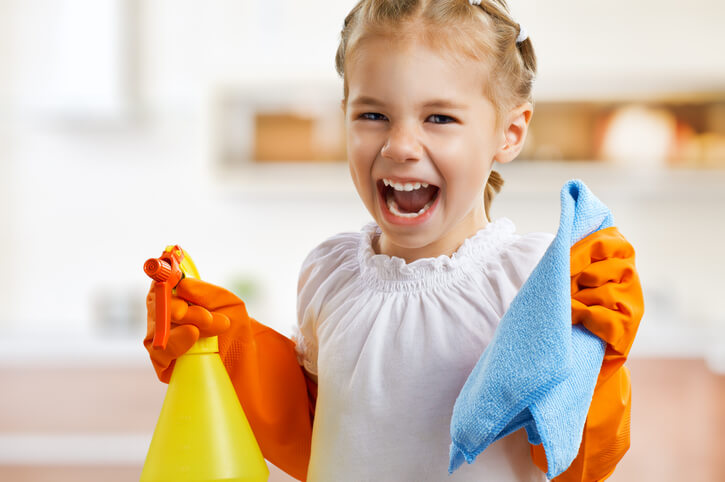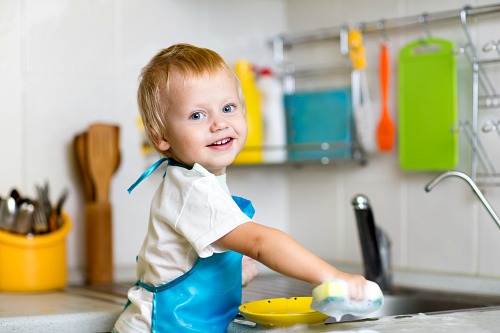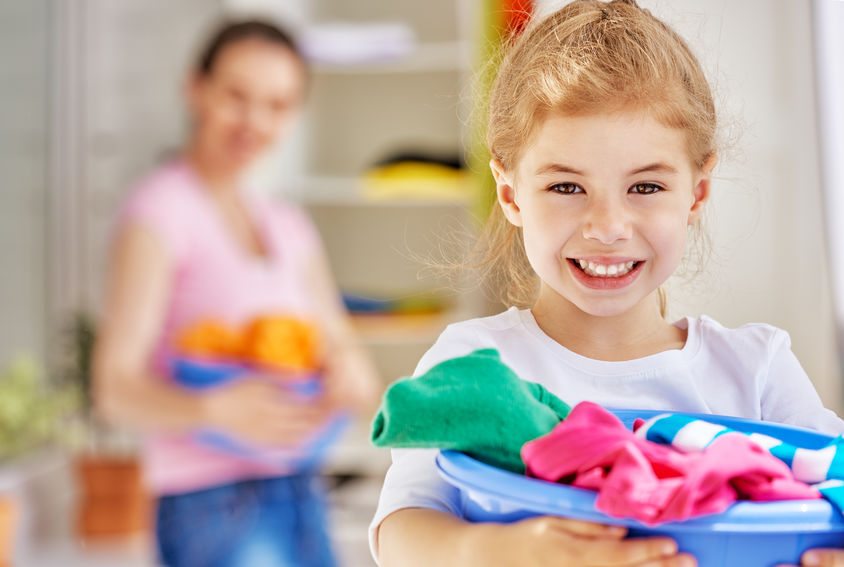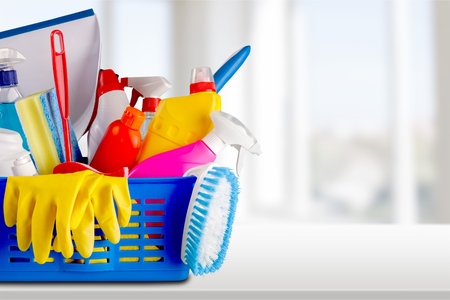Getting Kids To Clean
Getting kids to clean is challenging at first. The best approach to getting kids to clean is to train them while they're toddlers, so they never imagine until later years that it's even possible to go to bed with toys on the floor.
Picking up your things should be as ingrained and habitual as brushing your teeth.
Parents with older kids will have to work a bit harder to get their children's attention, but it can be done. These strategies for getting kids to clean can help.
Getting Kids to Clean: Toddlers
The easiest way of getting kids to clean is to start early. Getting kids to clean: Introduce your toddler to the concept of cleaning up and putting away her things as soon as she walks out of diapers at the latest.
My youngest son began tossing his dirty jammies atop the laundry hamper in his room just after he turned a year old.
By the time he was 18 months old, he knew that cars and trucks must be put away - along with the plastic mat "road" they race on - before the dinosaurs came out to play.
By age 3, he automatically came to the laundry room when he heard me opening the washer or dryer door.
He loves grabbing chunks of soggy clothes and throwing them into the dryer. Something about the thud the soggy duds make landing in the dryer floats his boat.
True, these small efforts are a small help. You'll probably find yourself redoing all the helpful cleaning young tots do for you.
There's a good measure of truth in the old saying, "Cleaning with kids is like shoveling the driveway while it's still snowing."
For example, I'm a big fan of disposable floor mop wipes, and so is my son. He figured out how the wet mop leaves a snail trail (and it's wet, oh goody!) while cleaning our kitchen floor.
It has reduced him to tears on several occasions when I had to take it from him after 20 minutes of "cleaning." It took me an additional 20 minutes to clean up his cleaning up!
It's hard to be patient at times like these. But your patience in getting kids to clean will pay off in a big way: Your toddler won't grow up thinking Mommy (or Daddy) is the maid.
Invest the time now in getting kids to clean, and you'll be rewarded with a child who takes pride (if not joy) in carrying his share of the home-cleaning load.
Neglect this lesson, and your child will still be cute - for a while. Then she'll grow up and drive people crazy with her serve-me attitude.
In short: Kids are born wired to clean. All we as parents have to do is encourage that tendency (even though it initially means tasks will take twice as long to complete). Kids love to help, so let's let them!
When children reach ages 2 or 3, it's time to start using a more formal approach to getting kids to clean, such as a chore chart and stickers.
And today, I'm thankful for the time it took to get them into the cleaning routine. For the most part, they're whine-free cleaners and helpers.
Getting Kids to Clean: The 21-Day Rule
If helping out is a new concept in your home, you'll need to take a gradual approach with your school-age kids.
Like grownups, they can get set in their ways. But you're in luck, even if chores have been few and far between up until now, because as long as they're still at home, you're the boss.
Getting kids to clean: It takes 21 days for a habit to form.
So starting slow is essential for good cleaning habits to establish themselves in your home.
Begin by creating a chore list with just one or two chores for each school-age kid.
Initially, assign them responsibility for their own things—school papers, packing tomorrow's lunch, permission slips, and making beds daily—and then graduate them to responsibilities throughout the home.
A few weeks later, add a family Saturday clean-a-thon. By year's end, your eldest will be cleaning the bathroom, your youngest will be delighted to help sort laundry, and your new program of family housekeeping will be routine!
Give older kids some input in your new system. They're part of the overload-on-chores problem, right? So, make them part of the solution.
For example, when introducing the chore list or chart, talk with them about the best ways to set it up. Let them decide when they will do their chores. (Within reason, that is!)
Getting Kids to Clean With a Family Meeting
Now that you've prepared yourself, it's time to get your family on board. Start getting kids to clean by calling family meeting.
Don't let the meeting part scare you: It can be as casual or formal as you and your family, like no required gavel or agenda.
Though ultra-organized people like me would probably want to open the meeting with a brief overview of the topics to be covered and then tackle them in a preset order, it's probably unnecessary.
However, your family meeting must take place on a day and time when every family member can attend.
Saturday mornings or Sunday evenings work well for many families; your meeting time will depend on your schedule.
Be flexible and pick a time when everyone is relaxed. Here are some strategies for a successful family meeting:
Choose the location carefully. Hold your meeting in a place where the seating puts every family member on relatively equal footing. Around the kitchen table would be better than having the kids sit on the living room rug while Mom and Dad talk from the sofa above them.
The reason is simple: When starting any new system, especially one that involves every home member, getting everyone on the same page and making everyone feel a part of the process is essential.
Sell your new plan. To make your new home-keeping routine successful, you must explain why sharing the load is good for your kids. And for you. Here are a couple of key selling points you could mention:
- The more the kids pitch in, the less Mom and Dad have to do, and the more free time everyone has to go to the movies, eat out at favorite restaurants, or take afternoons off and head to the beach.
- Chores teach kids salable skills. Babysitting and lawn-mowing are popular teen tasks. And who better to cut their teeth on than forgiving Mom and Dad?
Once your kids see what's in it for them, you'll find getting them to pitch in isn't the big deal it once was.
Define the chores. Next, you'll need to explain what the chores are. Explain that some "personal virtues," such as making your bed in the morning, are expected to be completed by everyone and aren't on the chore chart. Go through your weekly chore list.
You may even explain why each chore is on the list, such as we do the laundry once a week so too much doesn't pile up and become overwhelming.
Detail each chore on the week's list, taking time to explain exactly what's expected of doing the dishes.
To you, it might mean setting the table, clearing the table after dinner, and then helping you wash the dishes. To your 11-year-old daughter, however, it might mean waiting until you ask for her help. Or that she sets the table.
Head off misunderstandings by being crystal clear about your cleaning expectations early on.
Divide up the chores. It would probably be helpful to bring a chore chartThis is a great time to ask the kids how they want to keep track of things. Some like the thought of earning stars by their name on the fridge, while others prefer having a personal chart that they can consult and check off daily.
Explain how chores are to be divided up and when these chores are expected to be done. Perhaps you've chosen to write down each chore, place them all in a bag, and have each child draw their weekly task.
If your daughter suggests laying them all out on the table, allowing each person to take turns choosing a chore he likes (or dislikes least), consider implementing her suggestion.
If your son suggests, however, that because your daughter got to have a sleepover Friday night, she should be given all the week's chores, that probably shouldn't fly.
Discuss how the chore system will be enforced. No arm-twisting here; let the kids know you won't be "enforcing" these new chores.
Instead, the entire family will commit to caring for each other and the shared home as decided upon during the meeting. It's do-the-right-thing time.
However, as a family, you may want to decide what to do as a group with a chore no-show-er.
Perhaps those who complete their chores can choose where to go out to dinner Sunday night or which family movie to watch. Remember, the key to keeping it successful is keeping it positive.
Give the kids the floor, too. You'll want to hear their thoughts and concerns on the new system. Invite and accept reasonable ideas from the kids on your chore system.
Remember, it has to work for everyone, so do what you can to make it work for them. Let everyone have a chance to hold court (or take the floor); everyone's involvement is essential.
If yours is a family of talkers (and talk-overers), consider having a gavel to signify who has the floor. For example, when Lyndsay has the dishwashing detergent bottle, she gets to speak. Uninterrupted.
Make it fun. This should be a fun time for your family. Serve popcorn and sodas. Or indulge in ice cream creations. Make it festive.
Be sure to end your meeting on a high note.
Family meetings are a great way to tackle all sorts of family dilemmas, not just the cleaning routine.
- Clean Home
- Clean
- Getting Kids to Clean











